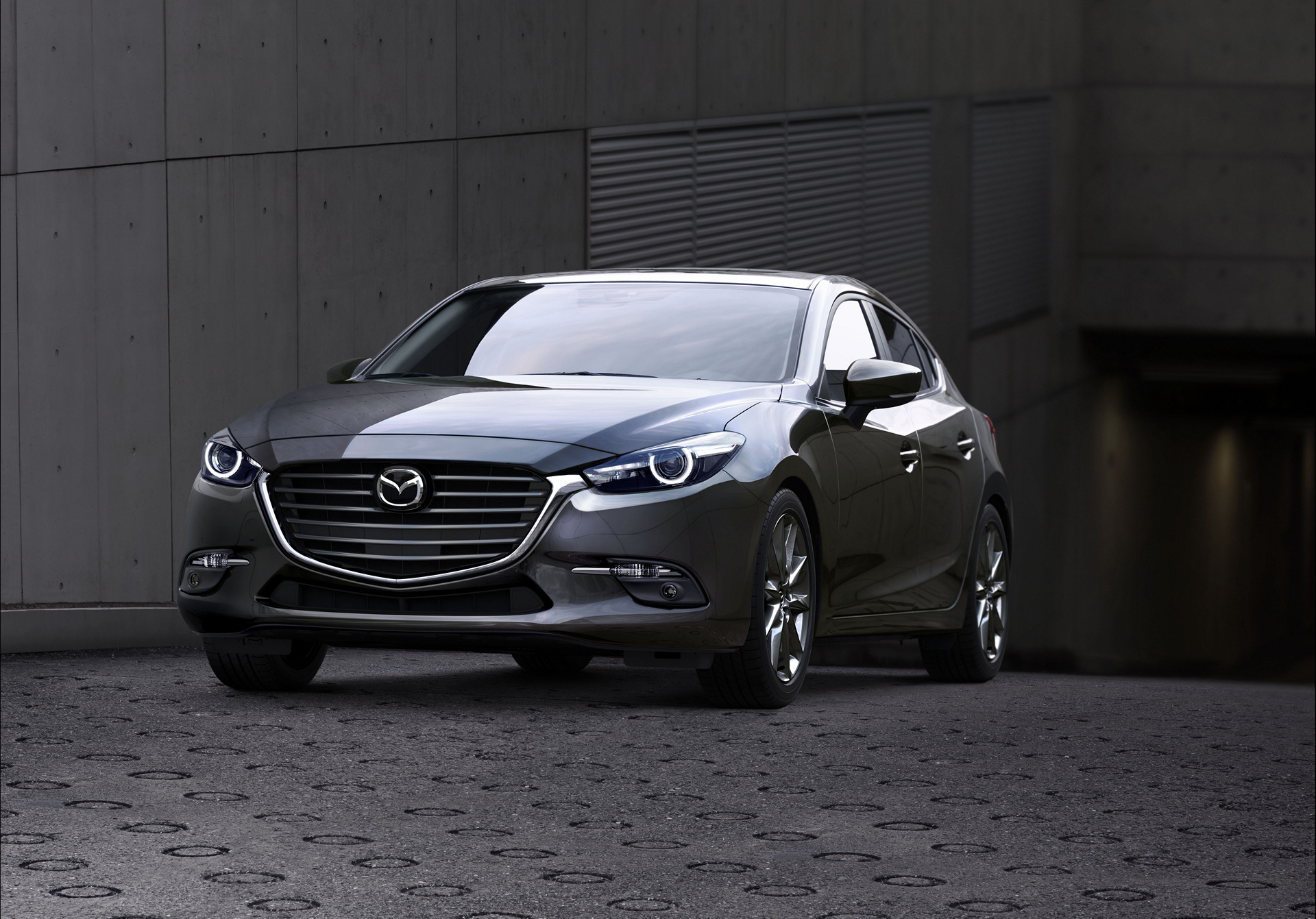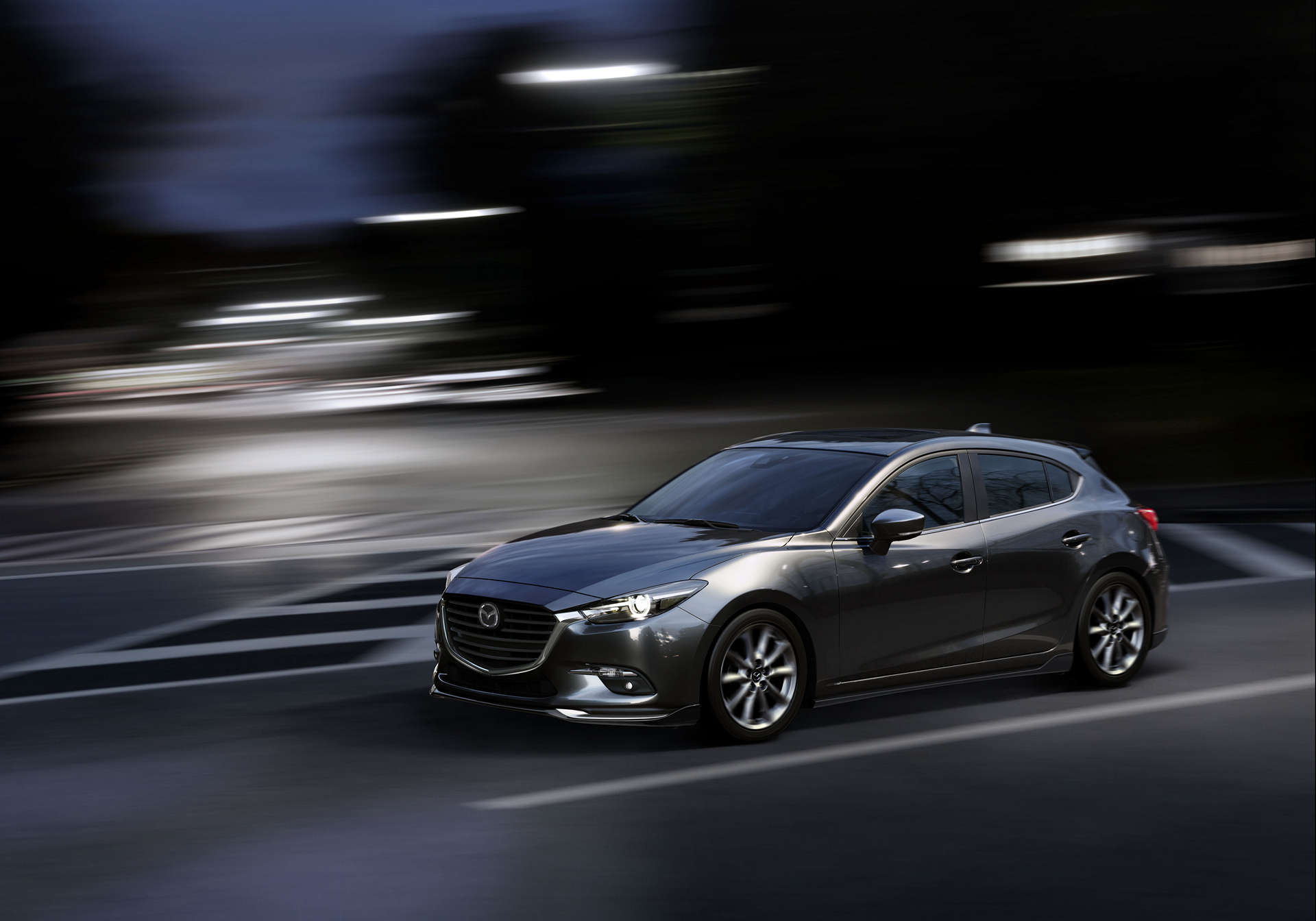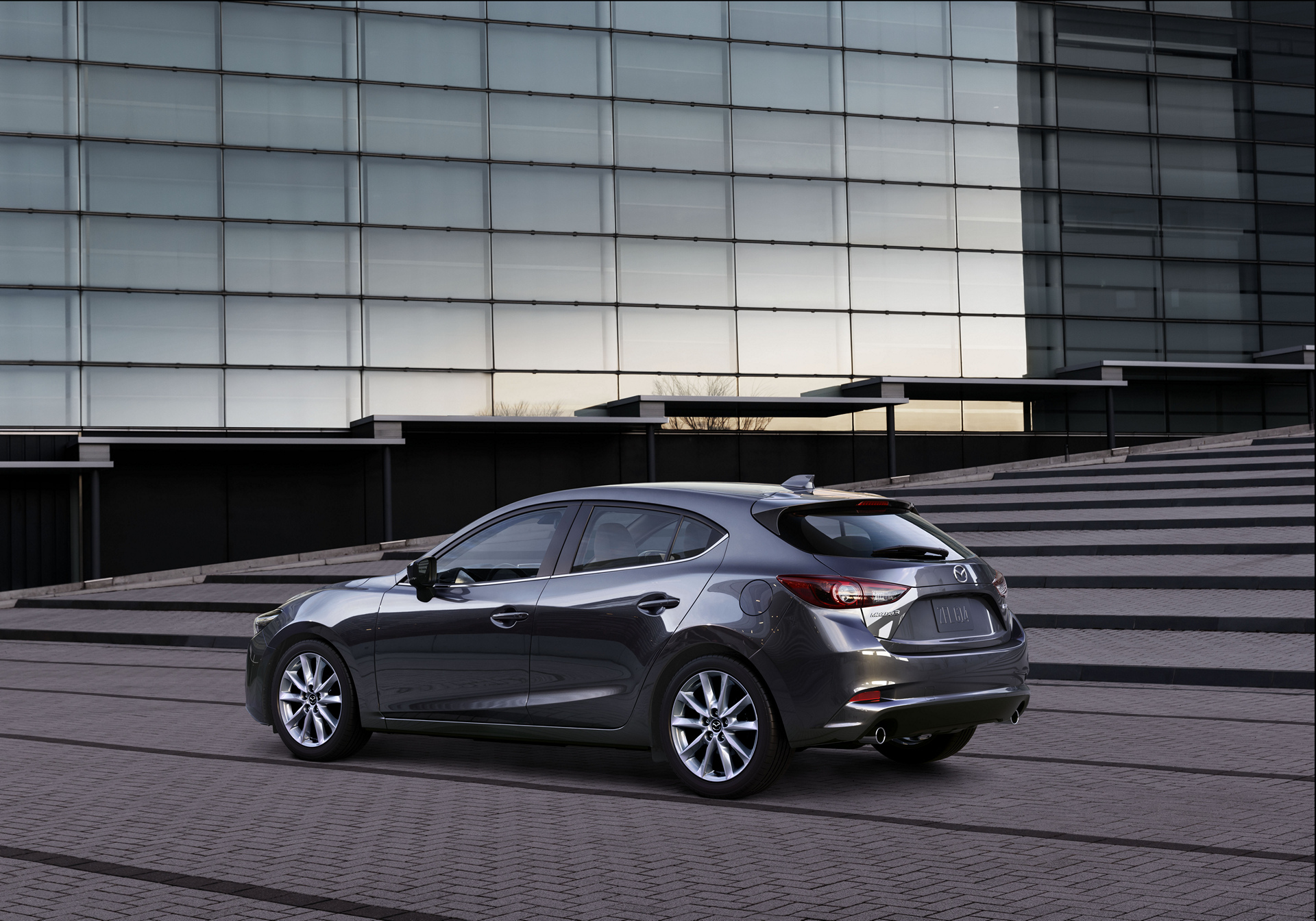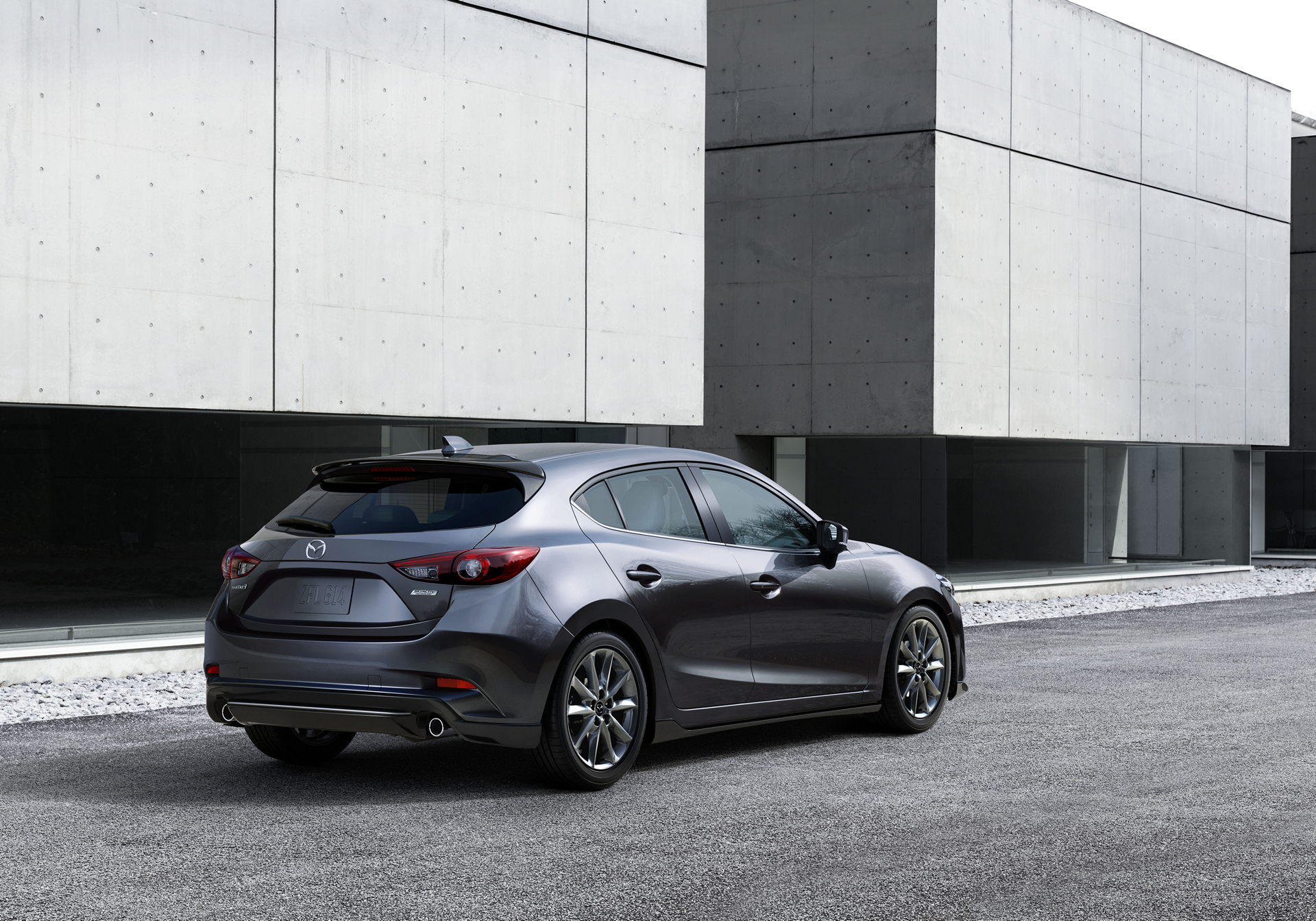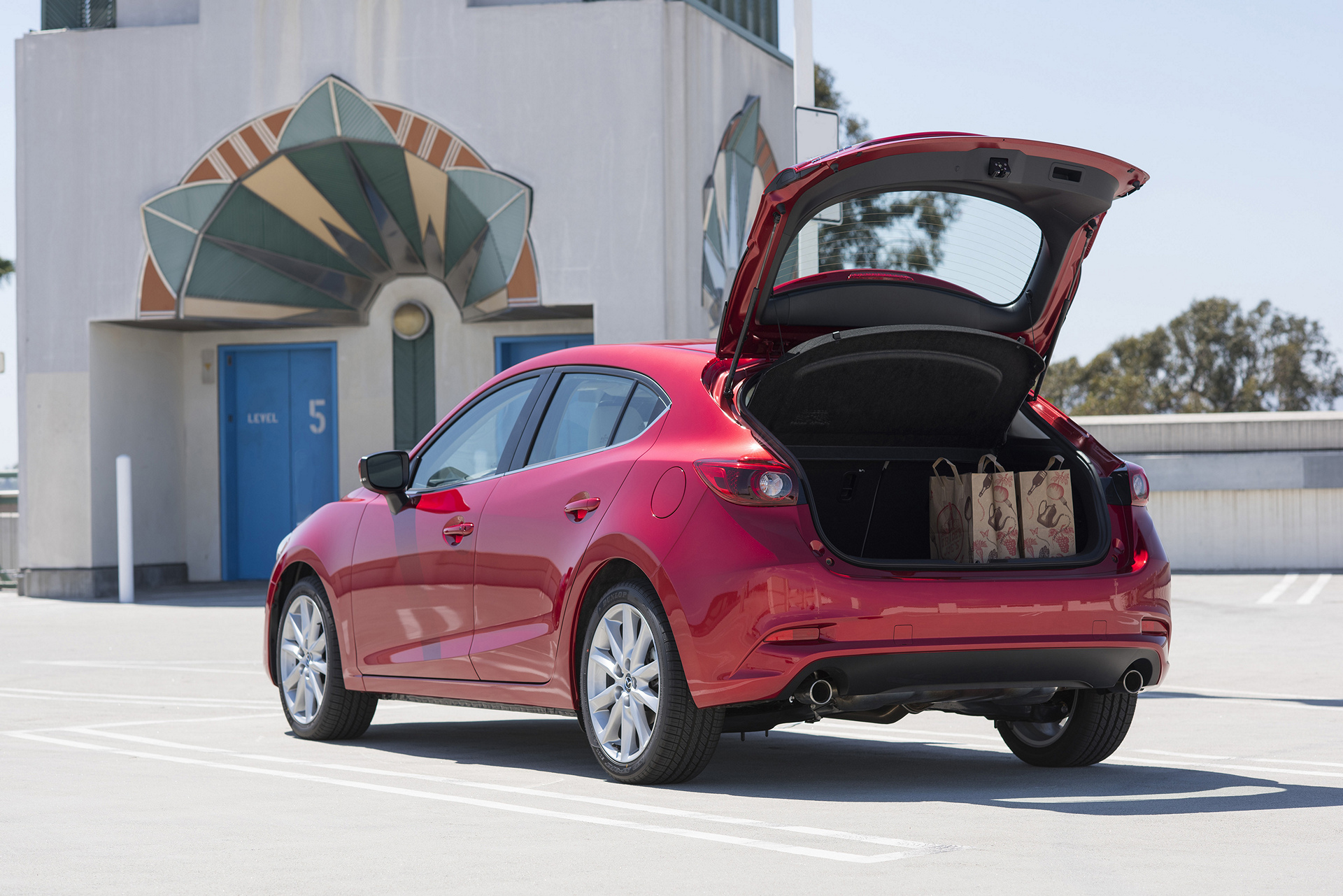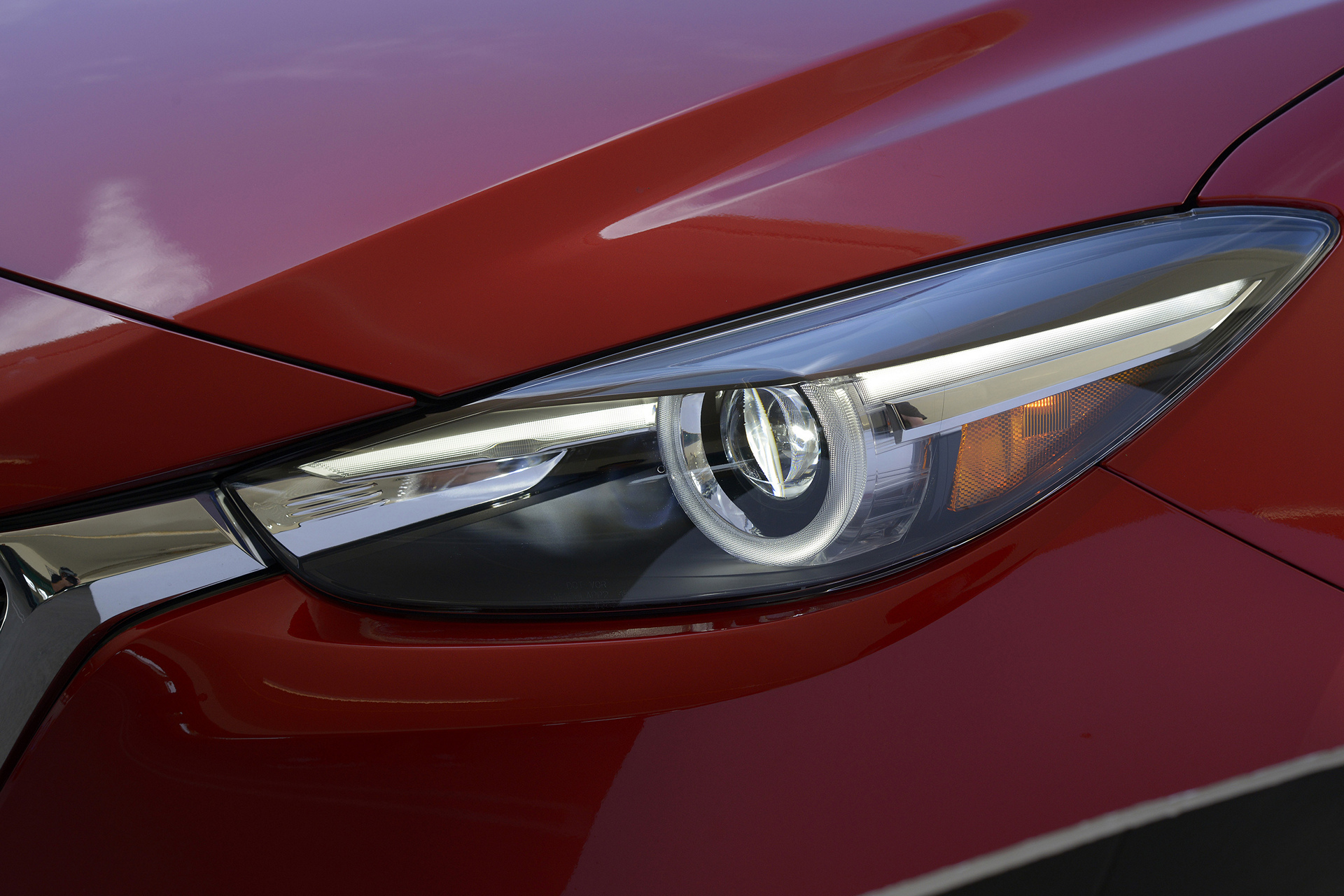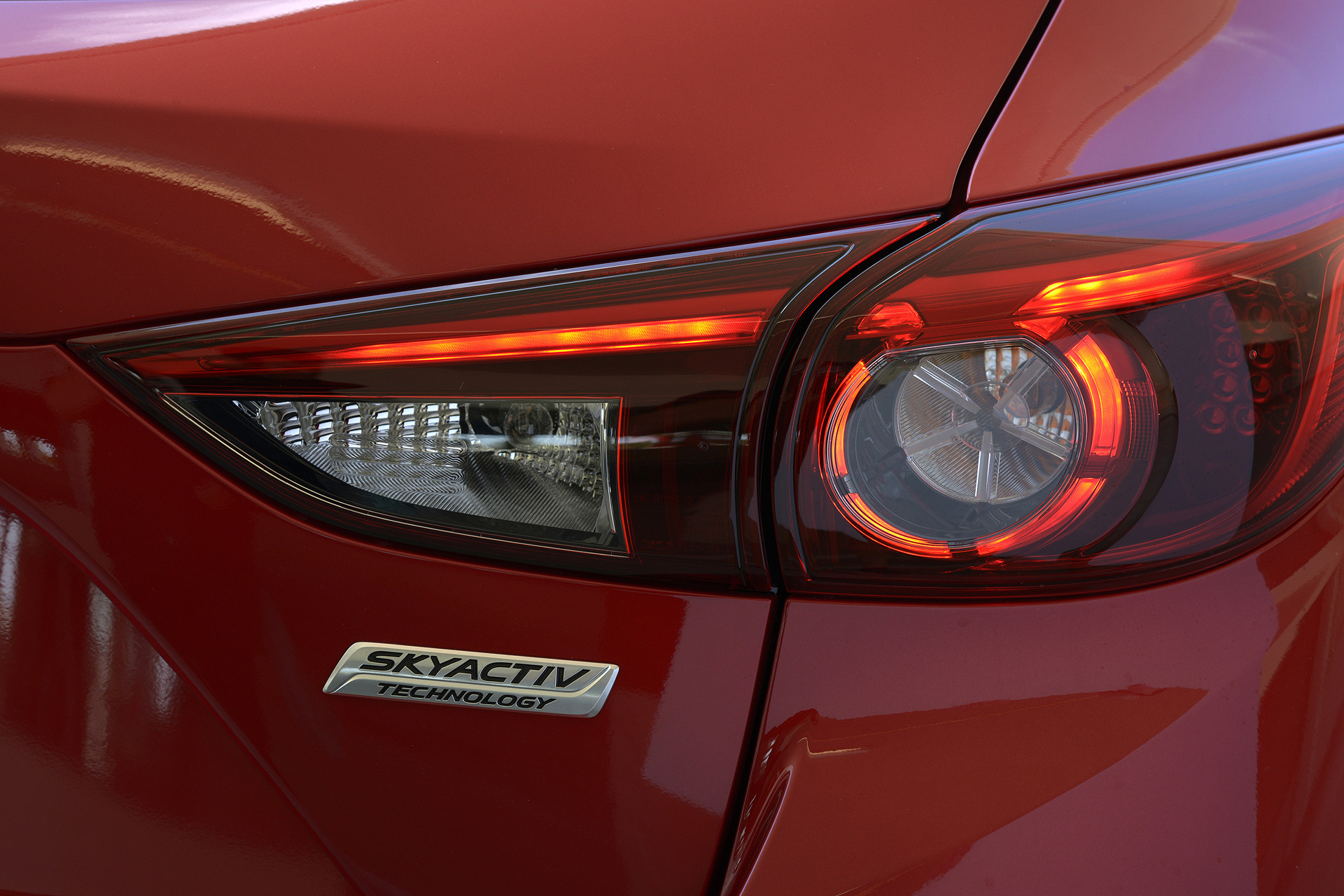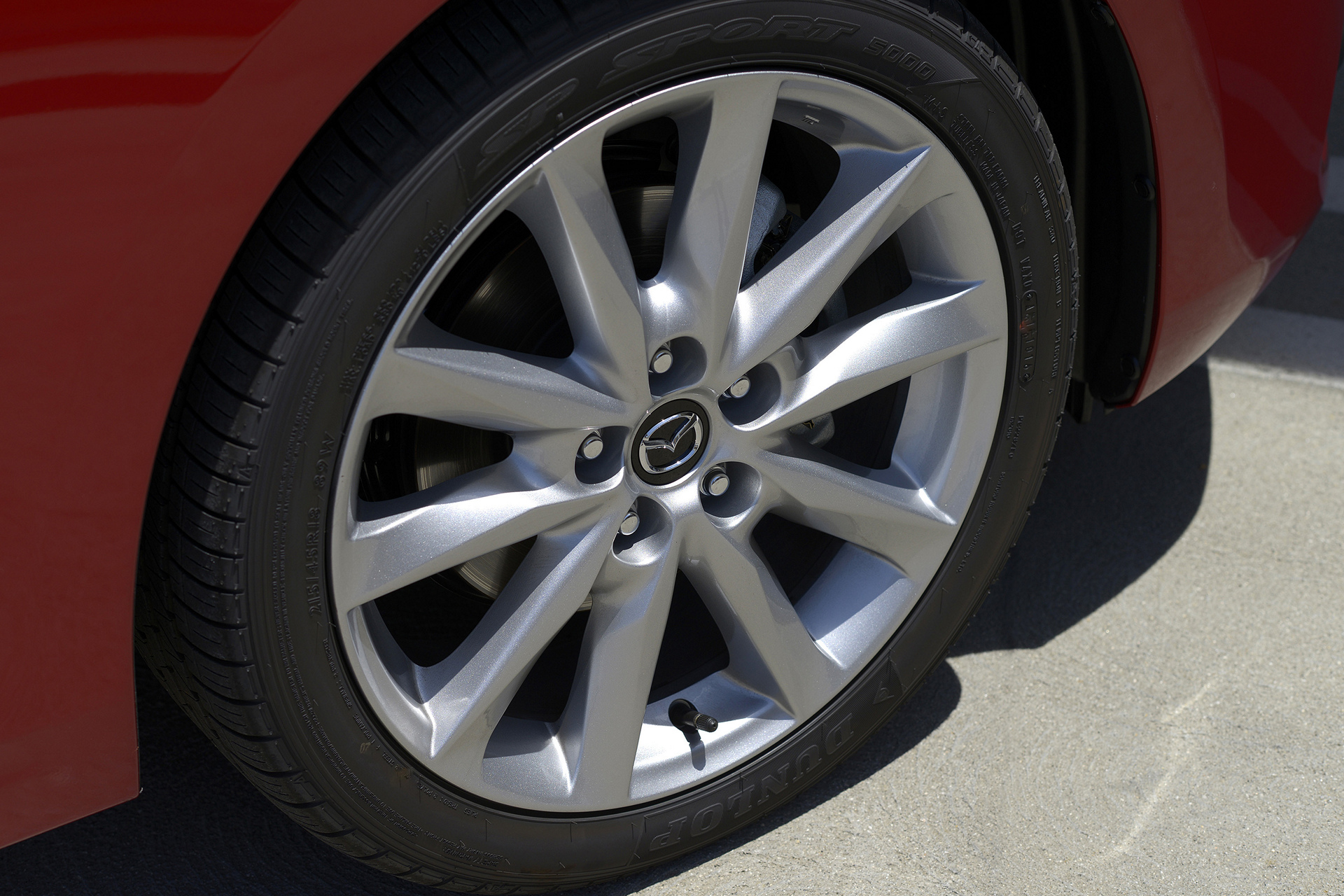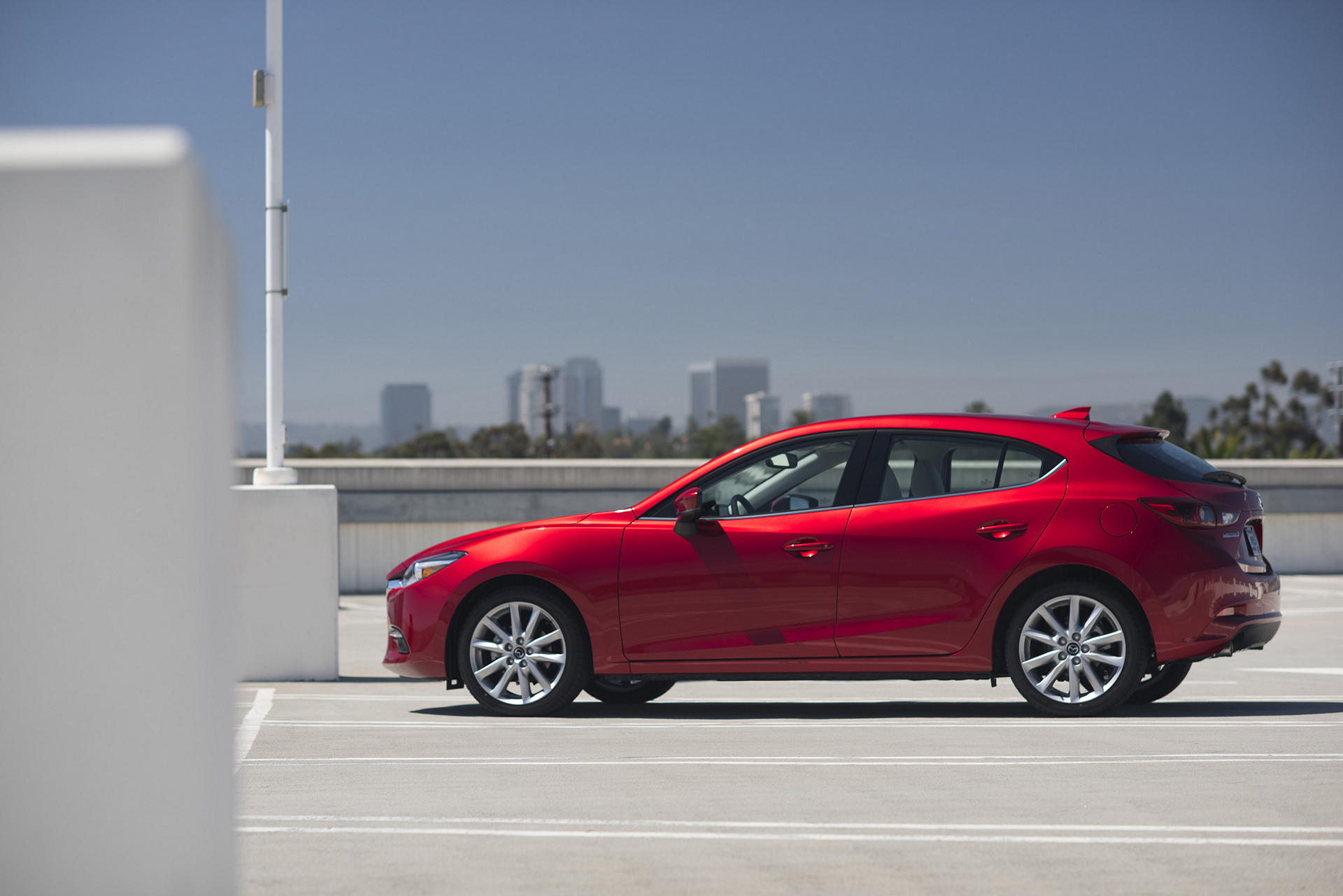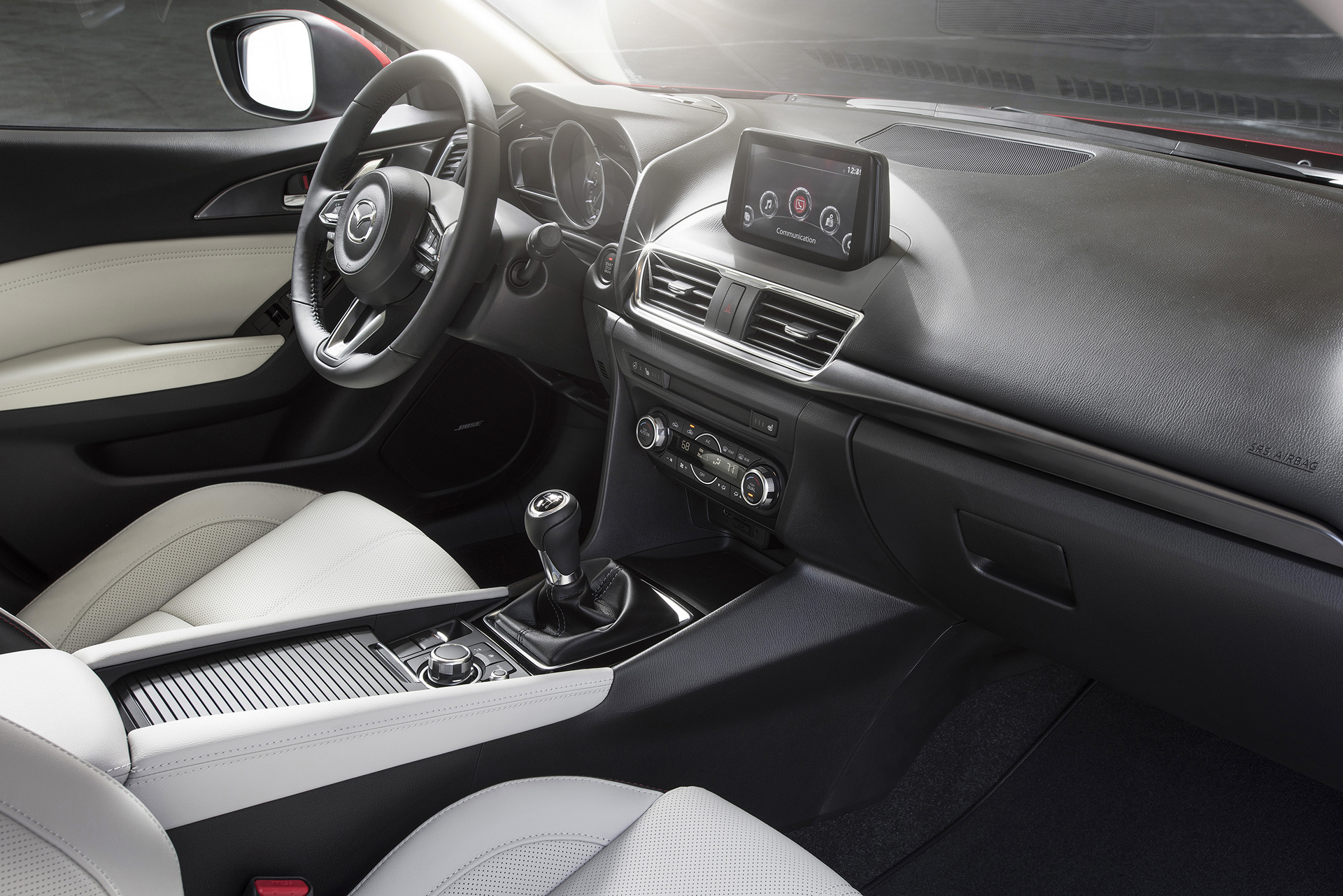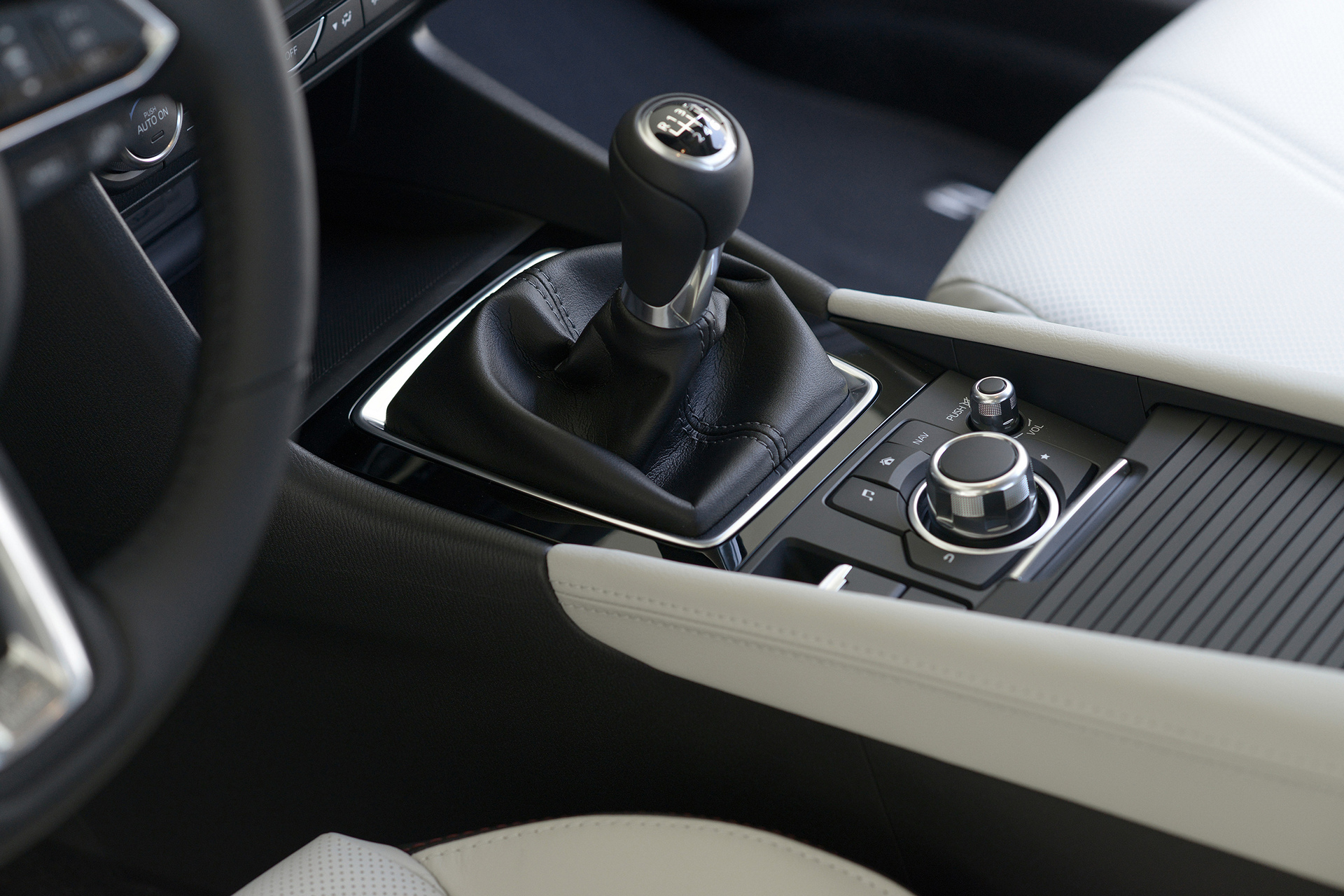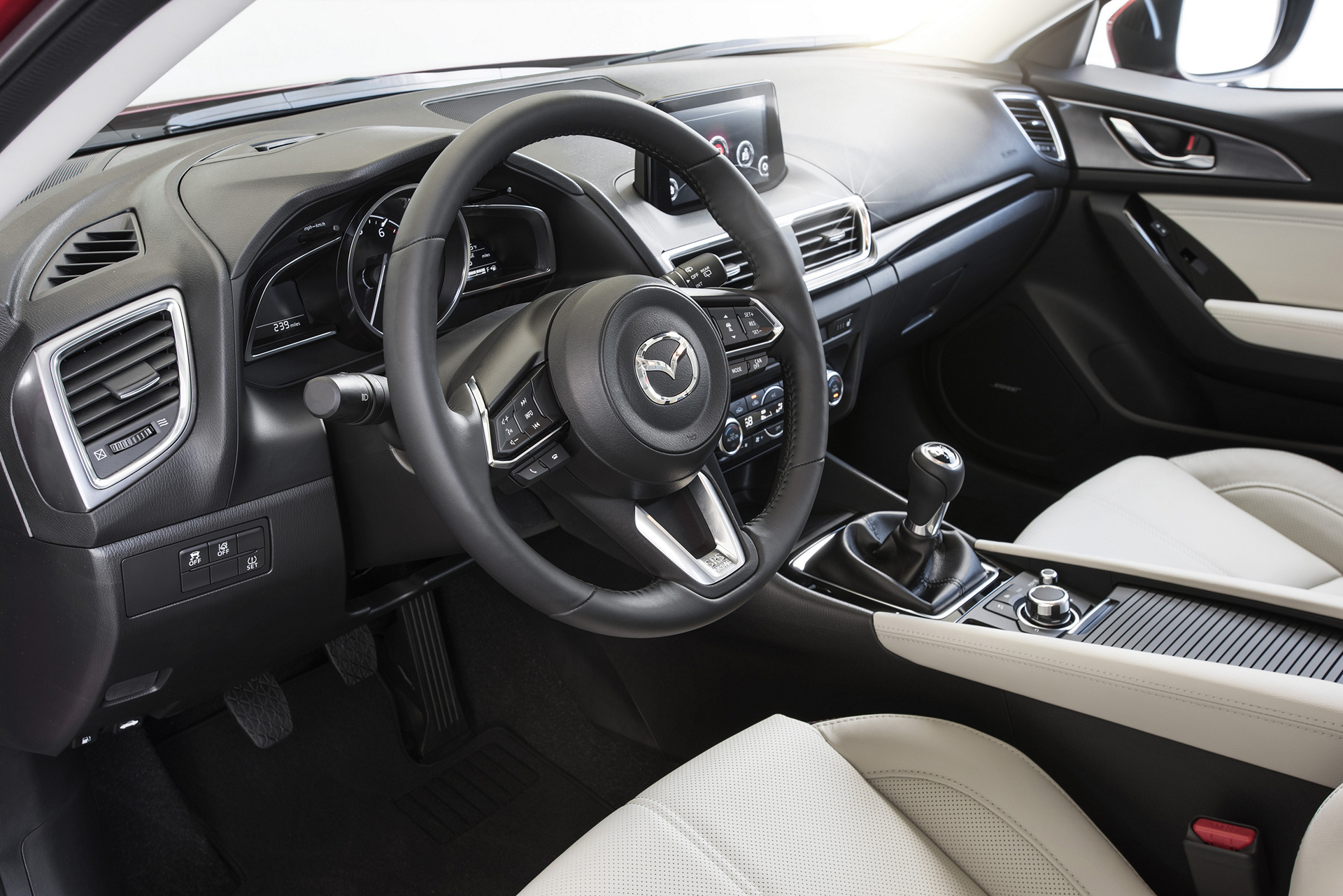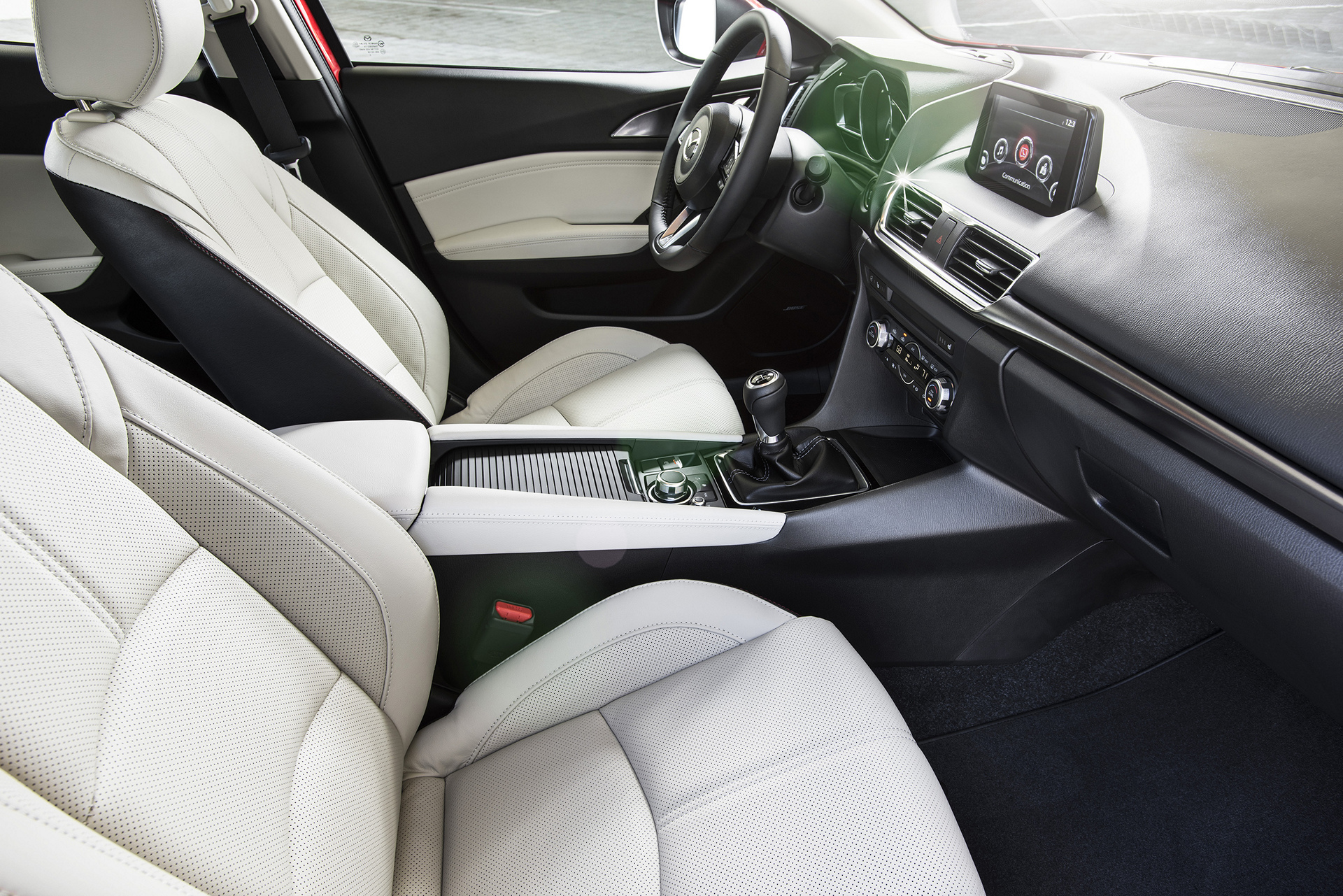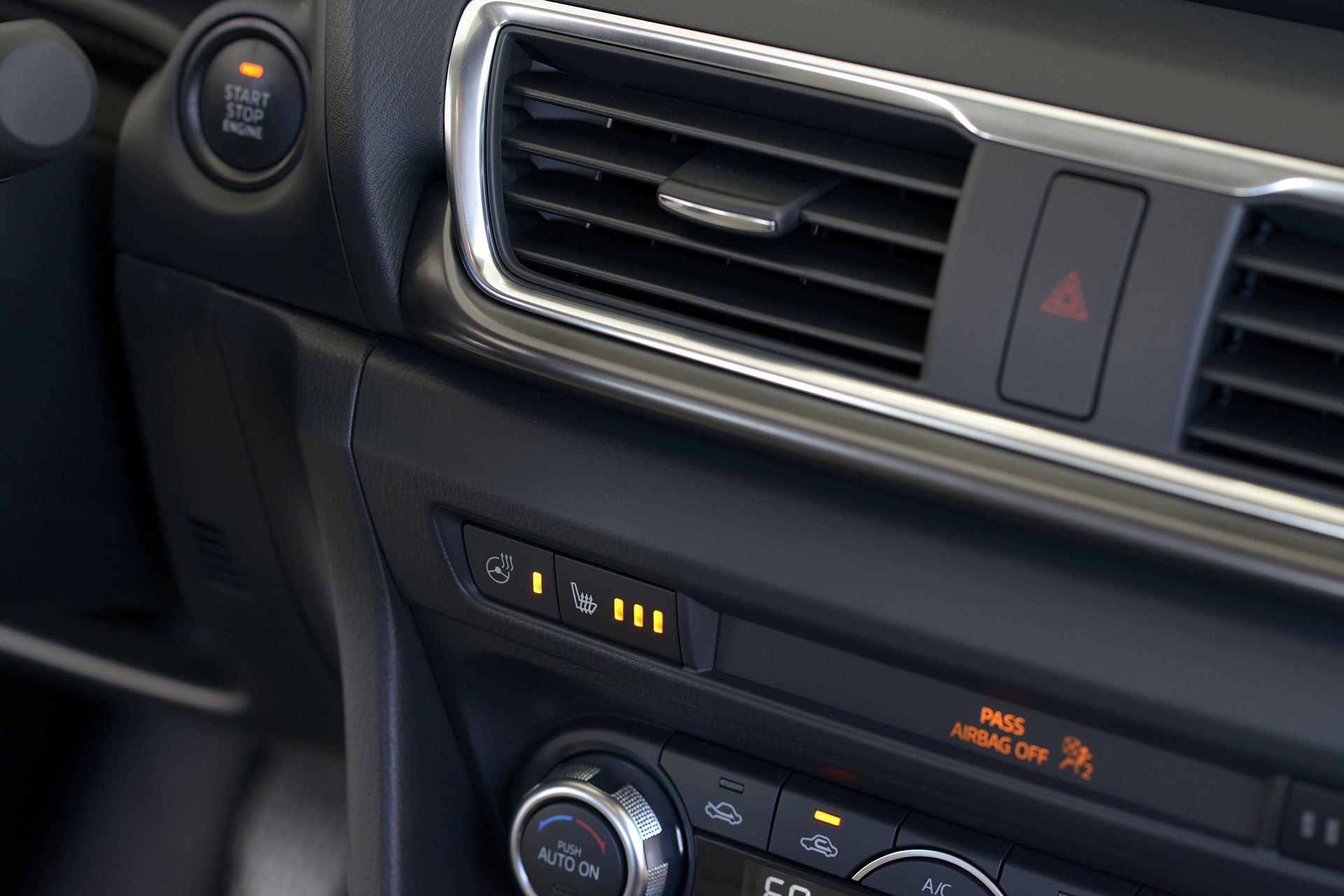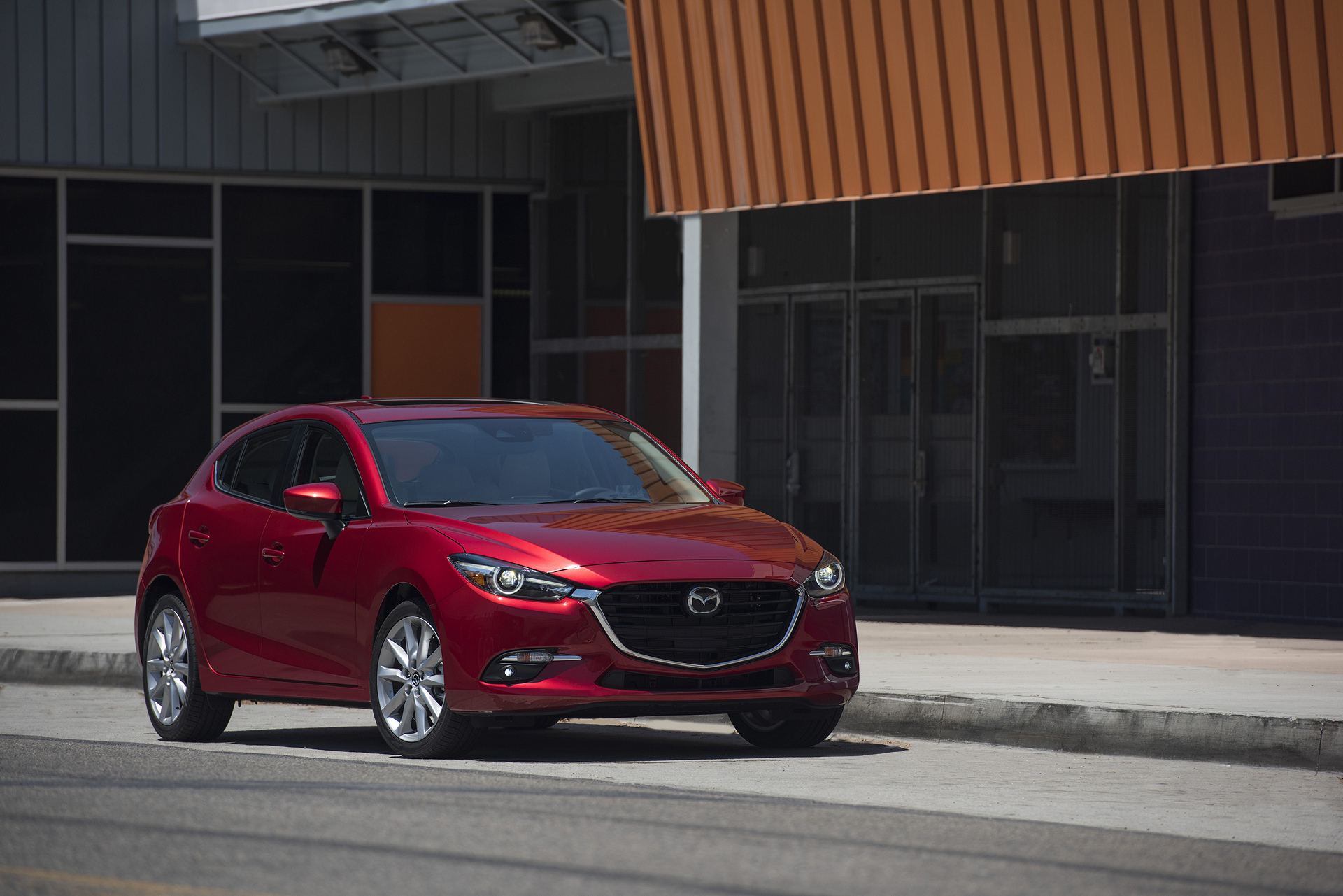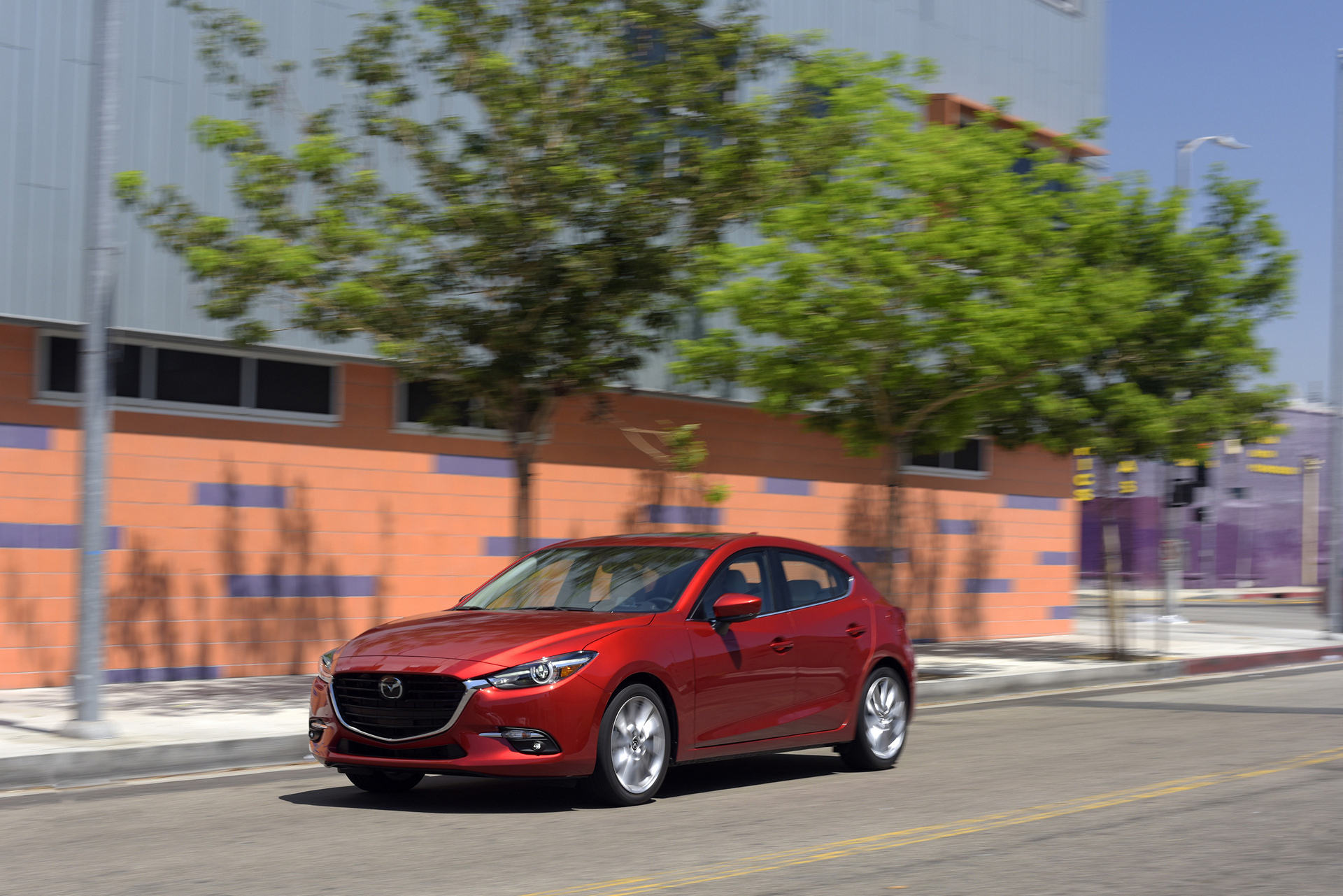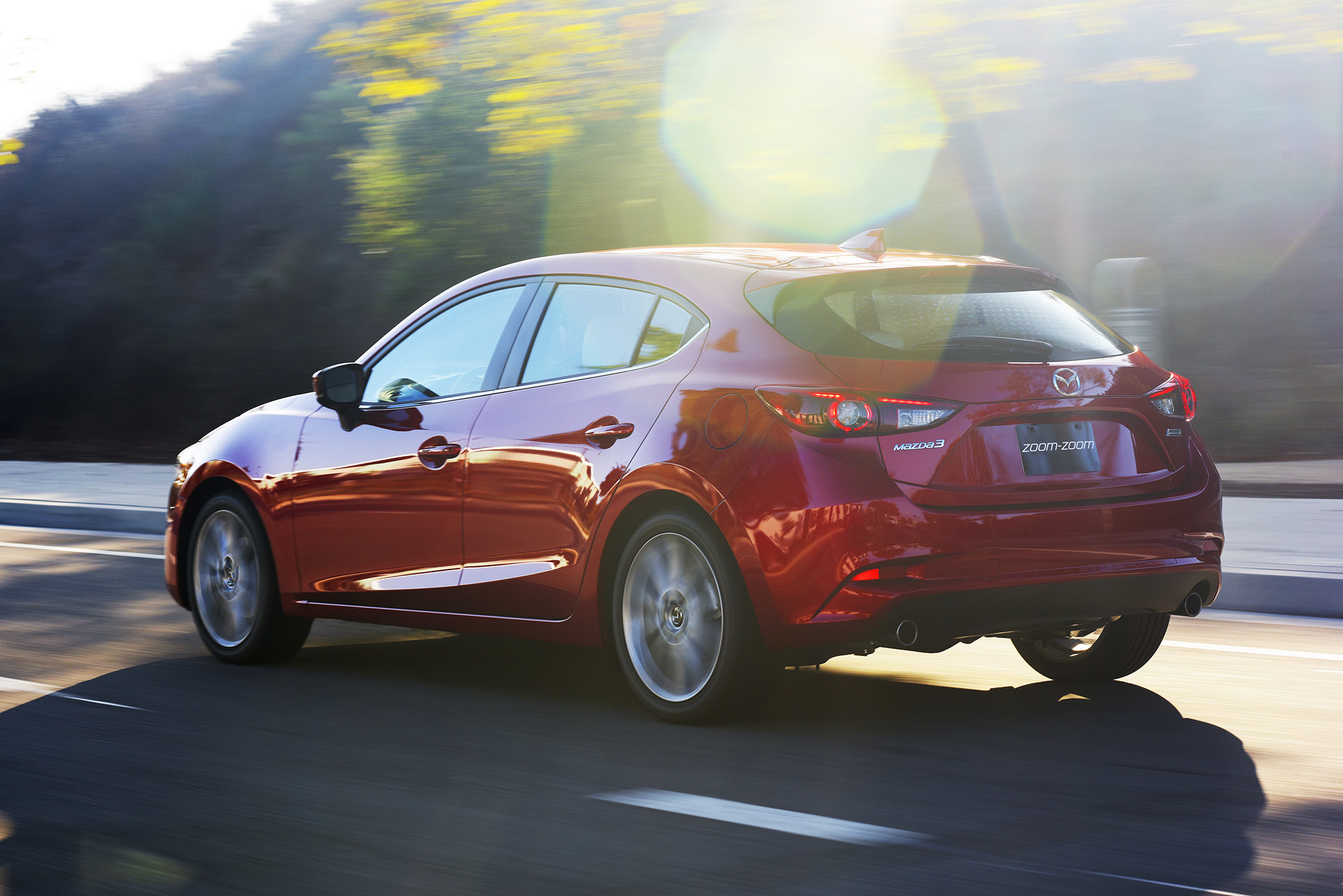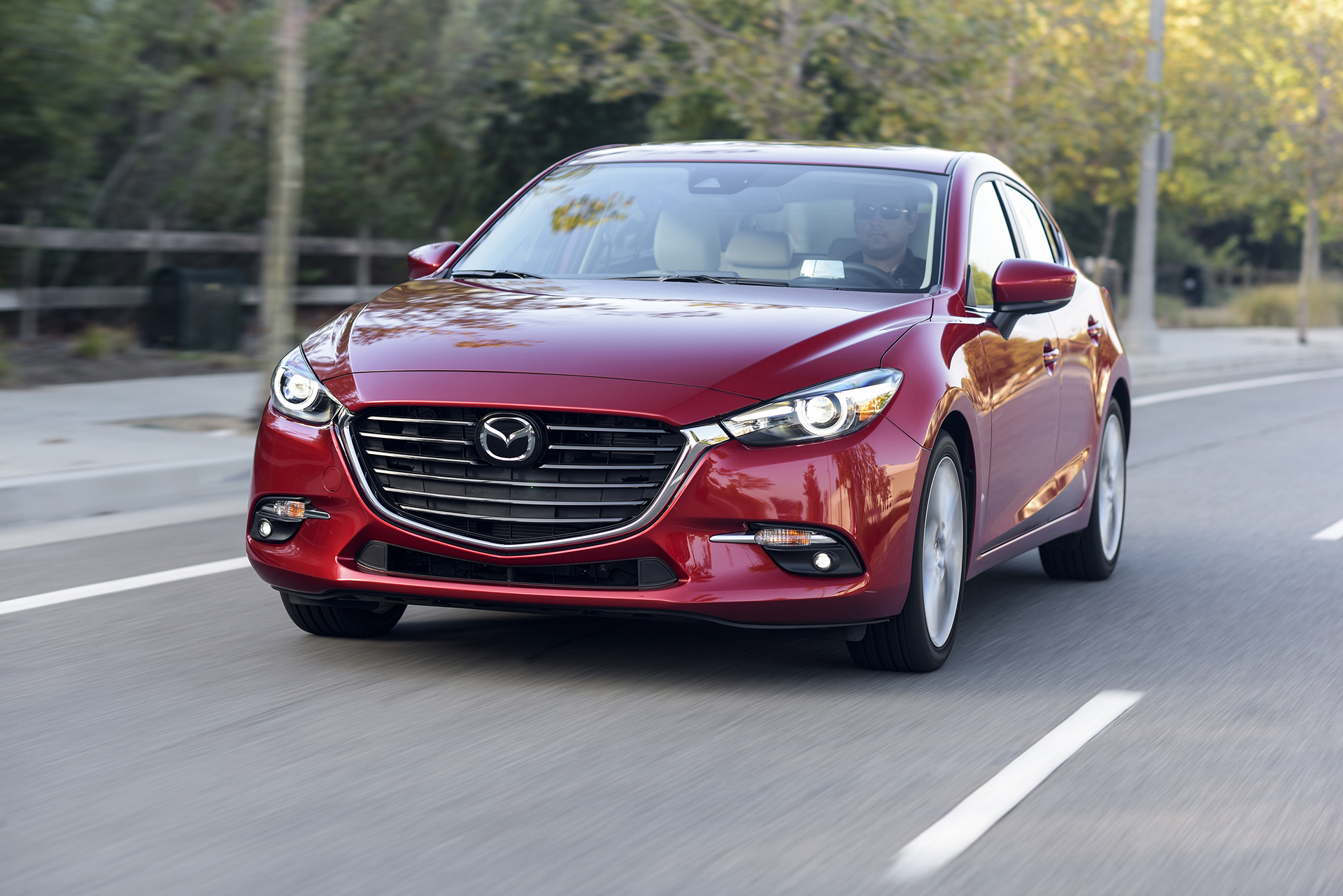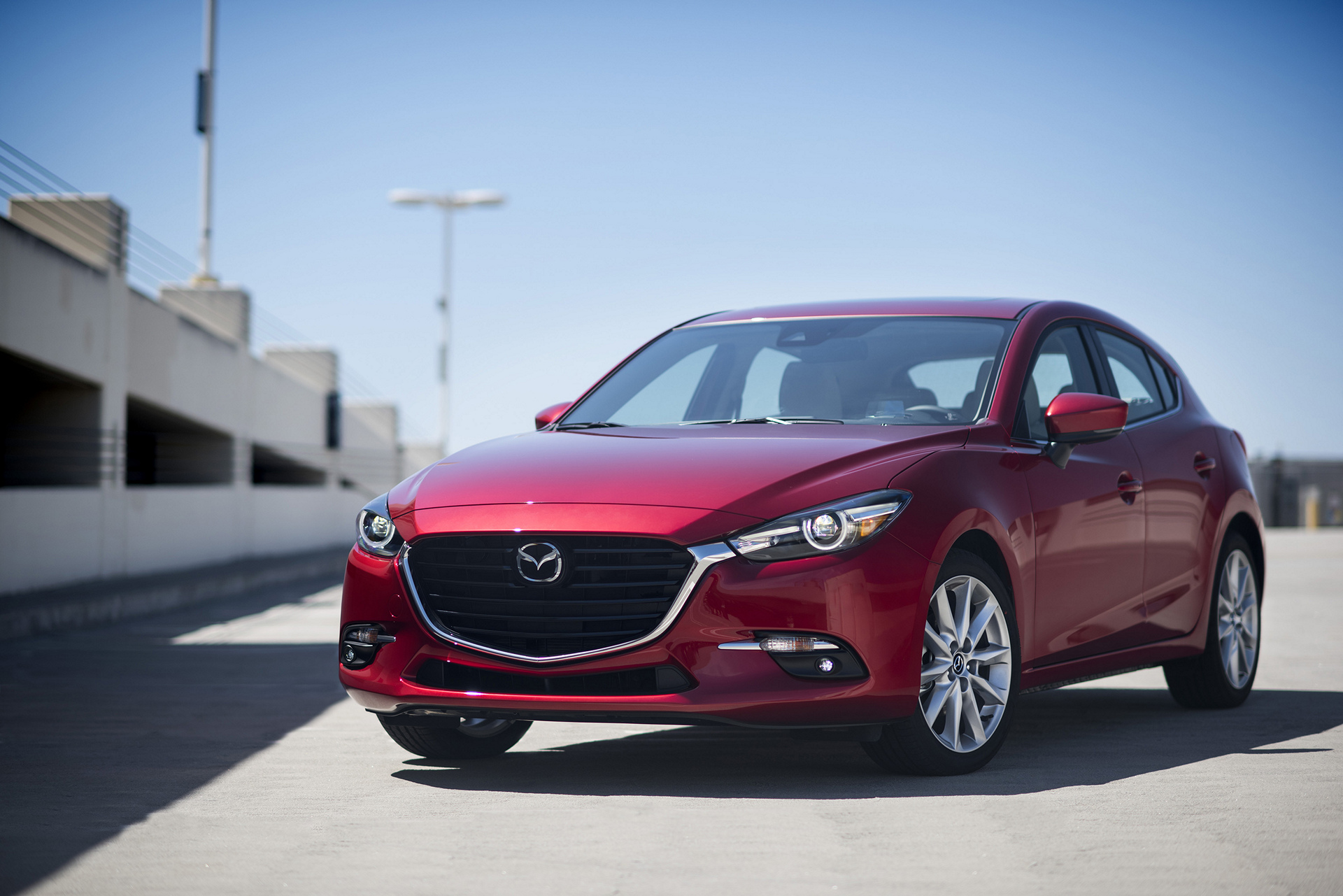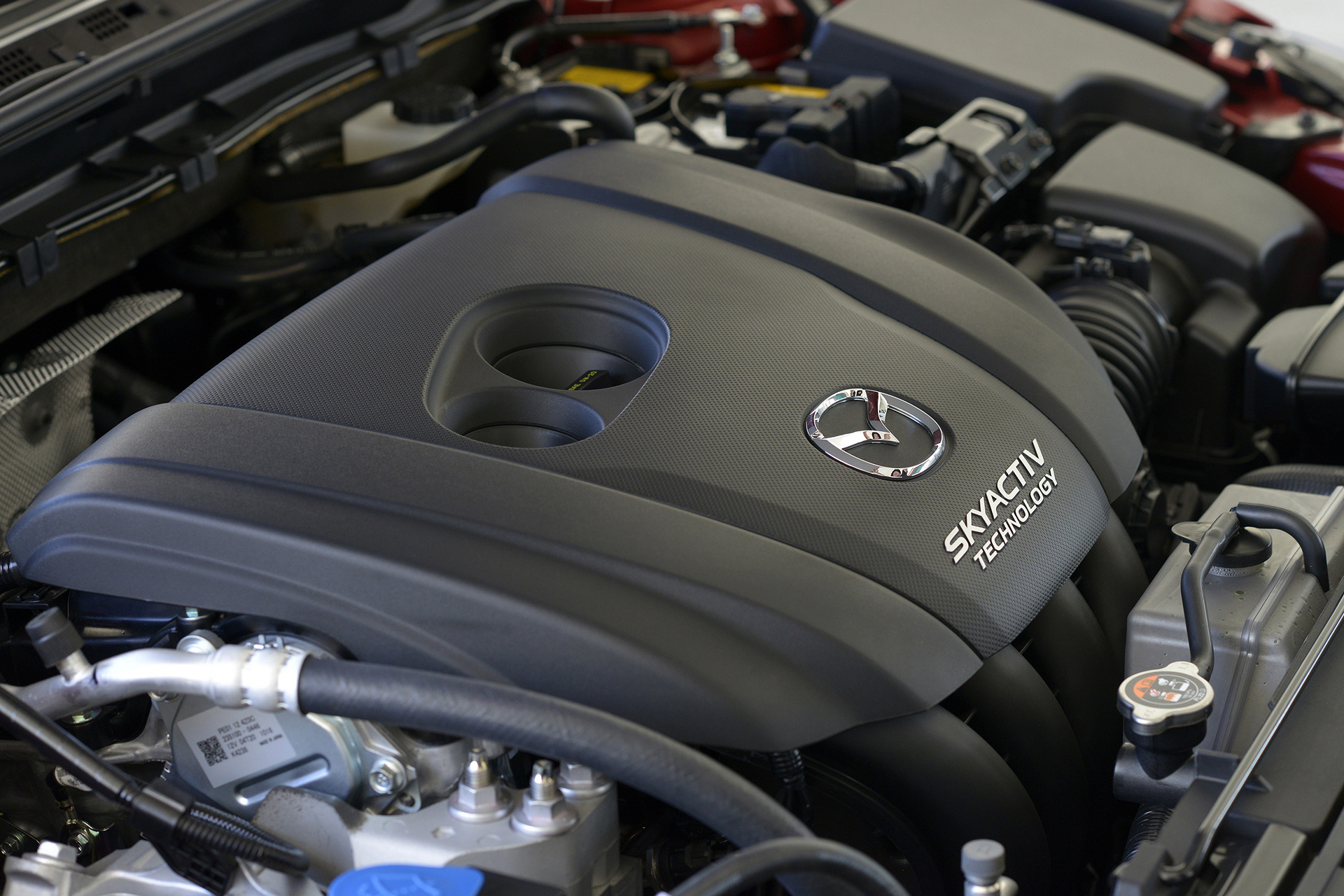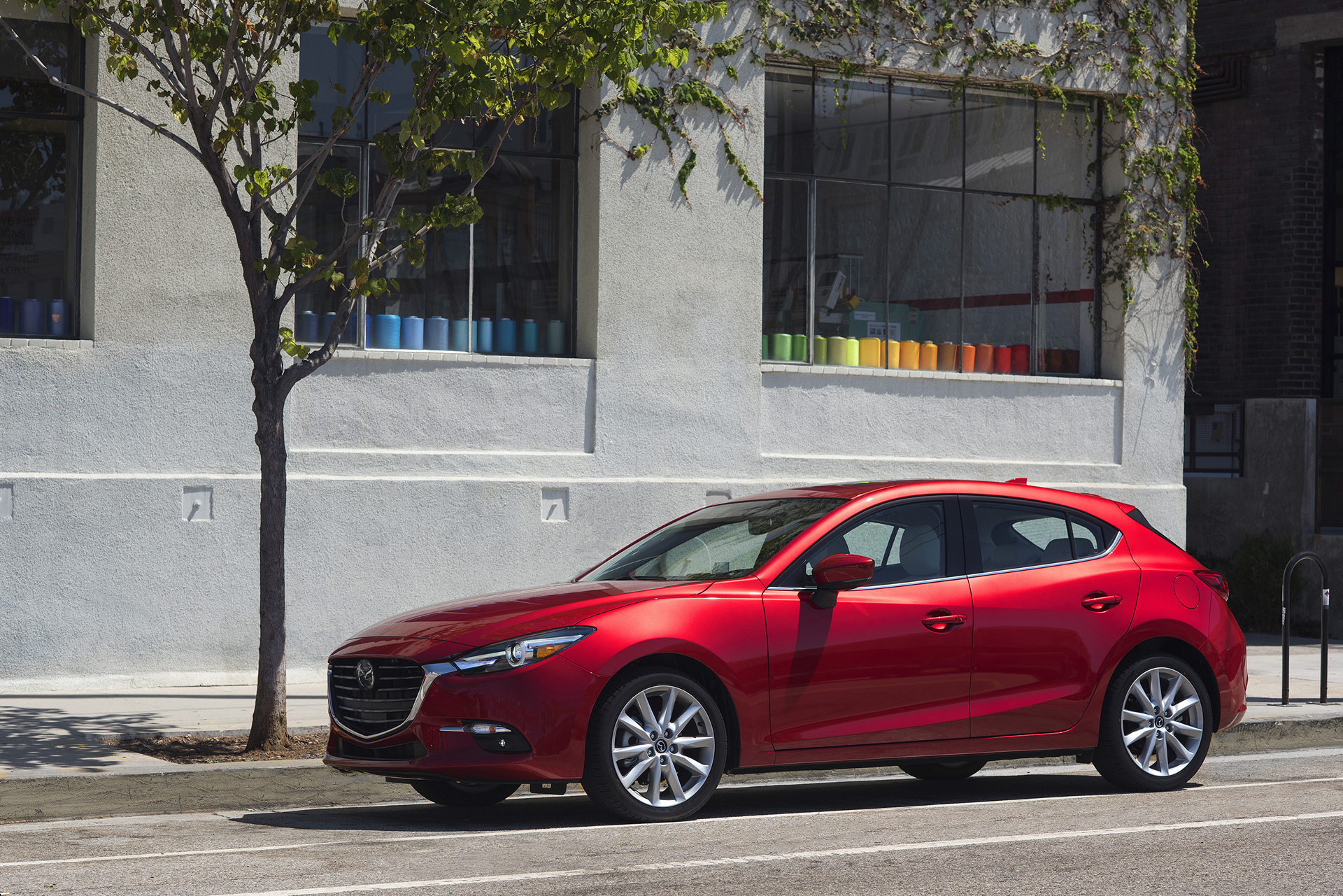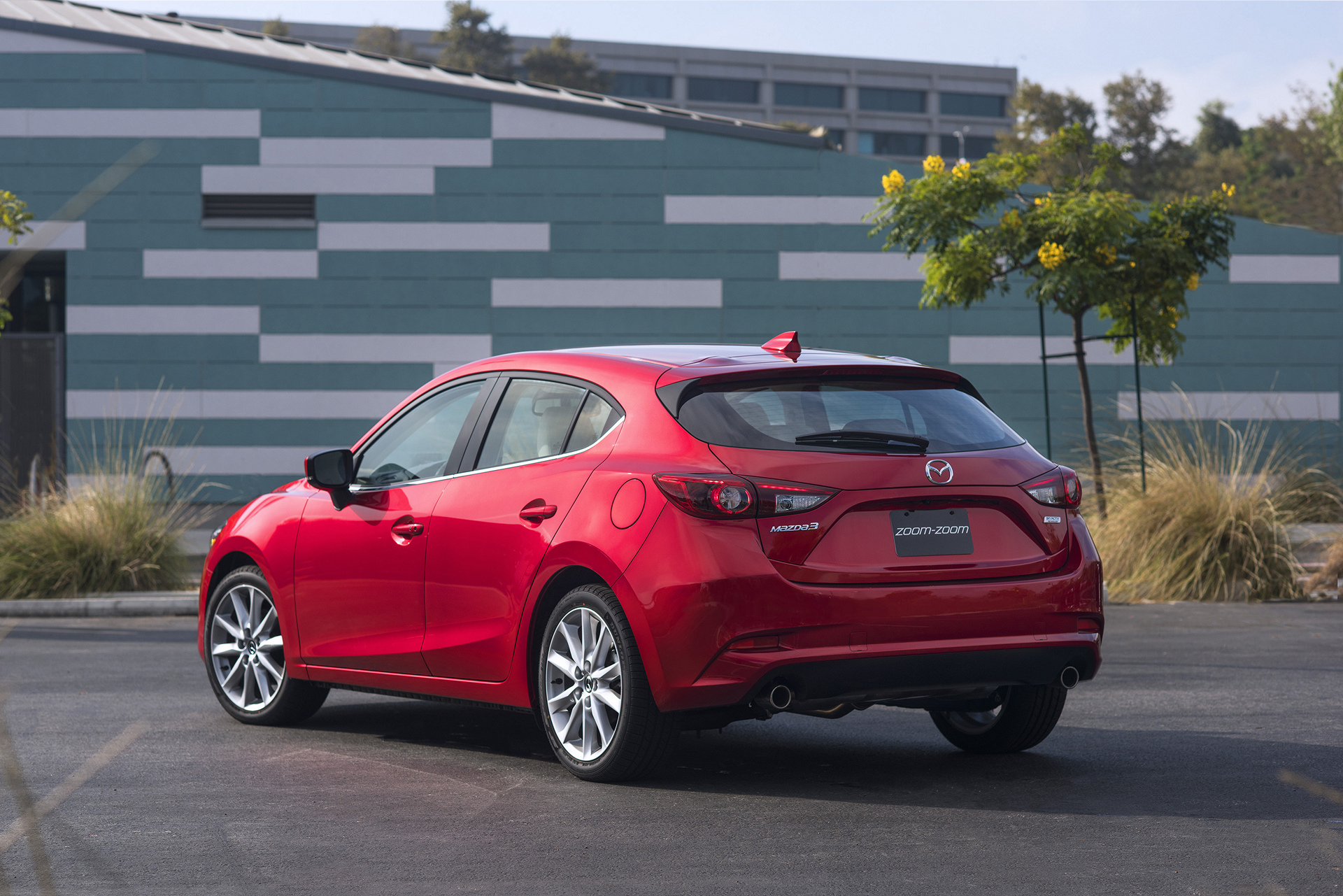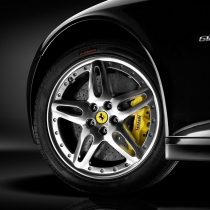Message from the Program Manager
THE MAZDA: Carrying the heritage forward
Our new-generation product lineup released since the launch of the Mazda CX-5 has earned customer support and high acclaim around the world for its powerful sense of vitality born of Mazda’s KODO—Soul of Motion design language and combination of driving pleasure and environmental performance delivered by SKYACTIV TECHNOLOGY. I feel this shows our company-wide quest to deliver unique value transcending notions of class and segment. Mazda is beginning to fulfill its dream of becoming an irreplaceable presence in the lives of our customers, connected to them through a strong and special bond. We strive to regularly update our products and continuously introduce the latest from Mazda to deliver greater value and refinement. We do this because we believe it is the true path toward satisfying our customers’ expectations and realizing our dream.
The current Mazda3 debuted in 2013 as the third model to join Mazda’s new-generation product lineup. Our aim with it as “The Mazda” was to embody the Mazda spirit in the most widely sold model the brand offers. With its unique appeal based on Mazda’s human-centered design philosophy, the Mazda3 assumed its role as a core model for the global market that would lead the way toward the evolution and advancement of the Mazda brand. Highly acclaimed, especially for its impressive design and excellent handling, the Mazda3 was selected as one of the top-three finalists for both the 2014 World Car of the Year and World Car Design of the Year awards.
Our primary theme for this, the model’s first major update, was to heighten the Jinba Ittai driving experience. Toward this purpose, we are introducing G-Vectoring Control (GVC) as the first application of Mazda’s new-generation vehicle dynamics control technology we call SKYACTIV-VEHICLE DYNAMICS. GVC was born from the revolutionary idea of using the engine to enhance chassis performance and was developed based on Mazda’s human-centered design philosophy. It is a technology that aims to provide both the driver and all passengers with the Jinba Ittai experience by realizing smooth, predictable and efficient movement. With our goal clearly defined, we paid close attention to passionate feedback received from our customers as we worked to evolve the Mazda3 to a new level. We started with evolving the product in the areas of safety and peace of mind. This involved further enhancement of Mazda’s advanced i-ACTIVSENSE safety technologies. And, we further evolved the overall quality of the model from a vehicle-total perspective. With our goal being to evolve the Mazda brand and further raise the level of quality, we significantly improved the quality in all respects based on our human-centered philosophy. This ranges from improvements made to the interior and exterior design, to the respective functions, while also achieving a far quieter ride.
Mazda wishes to create a presence that turns the car into the customer’s trusted life partner, rather than simply serve as a mode of conveyance. The updated Mazda3 embodies all the latest points of appeal that Mazda has to offer, as befits its nickname, “The Mazda.” My true wish is that this earns it a place in the hearts of customers and becomes a valuable presence in their lives.
Akihiro Kashiwagi
Mazda3 Program Manager
Exterior Design
Flowing beauty that reflects a mature sense of composure
Embodying the KODO—Soul of Motion design language, the Mazda3 instantly attracts people with its emotional form that conveys a sense of vitality and dynamism. Its well-executed, beautiful design has earned high acclaim, including its selection as one of the top-three finalists for the 2014 World Car Design of the Year award.
For the 2017 Mazda3, Mazda concentrated on further polishing the quality of the design so it more strongly expresses the Mazda brand’s commitment to quality and ongoing evolution. The exterior design places importance on the physique of the car by emphasizing its form on a horizontal plane to instill a greater sense of width. This accentuates the body’s wide stance and creates dynamic, dignified proportions that convey a mature sense of composure. Further honing to the design’s beauty, dynamism and look of high quality evolves the refined character of Mazda3 such that it radiates with an even stronger sense of presence. One example is Mazda’s evolved TAKUMINURI painting technique used to give the new Machine Gray Metallic body color a look as if it were carved from a solid ingot of steel.
Exterior design
Front view
A new front grille and signature wing design combines with the adoption of LED headlamps to create a bolder yet pleasantly composed expression. The previous model emphasized the sense of vertical movement and rhythm for the overall V-shaped design of its front face to present a more emotional and dynamic look. In contrast, this update focuses on the horizontal plane, so called for the perception of a wider and lower stance with a lower center of gravity. In also enhancing the sense of fore-aft movement, it evolves the design to convey a stronger sense of quality and stability.
The brand symbol and license plate holder are positioned lower on the front grille to express the lower center of gravity. Chromed fog lamp bezels combine with the horizontal layout surrounding the front bumper to create a strong, wide-looking stance that evokes a sense of agile performance.
Adopting LED headlamps made it possible to realize a cleaner design with a three-dimensional structure inside the housing that gives the car’s “eyes” a more daunting expression. The wider angle of the V-pattern for the signature wings emphasizes a sense of lateral movement out to the left and right sides.
Rear view
The rear of the hatchback pursues the same expression as the front in conveying an axis running from front to back through the body, a low center of gravity and a wide stance. The horizontal layout of the new rear bumper expresses a composed sense of stability and high quality. The sedan’s rear bumper is carried over for the purpose of maintaining the right balance with the evolved front design.
Wheel design
The 18-inch aluminum wheels adopt a new design. Their straight single-motion design emphasizes their large diameter and brings a bold, taut look to the overall exterior design. The designs of 16-inch aluminum wheels and steel wheels (with full-size hubcaps) are carried over.
Body colors
A total of eight body colors will be available in the U.S., including the two new colors: Machine Gray Metallic and Eternal Blue Mica. Other colors include Soul Red Metallic, Deep Crystal Blue Mica, Sonic Silver Metallic, Titanium Flash Mica, Jet Black Mica and Snowflake White Pearl Mica.
Machine Gray Metallic accentuates the dynamic yet delicate surface structure of KODO design, treating color as an element of form. It marks the second premium finish color following Soul Red Metallic. With “the beauty of a machine’s strength and precision” as its theme, Machine Grey Premium Metallic emphasizes KODO’s beauty by achieving an exquisite balance of high-contrast shadows and a high-density finish. To create this color, the TAKUMINURI painting technology developed for Soul Red Metallic was further advanced to increase the reflective layer’s contraction ratio during the drying process. As a result, aluminum flakes are uniformly aligned in a regular pattern within a reflective layer that is only 2.5 microns thick—about a quarter of the thickness of a conventional reflective layer. It produces a metallic texture as realistic as a hand-painted finish, yet enables mass-production with a simple three-coat paint structure consisting of clear, reflective and color coats.
Eternal Blue Mica is being introduced as a new color that replaces Blue Reflex Mica.
Interior Design and Functions
The refined interior offers higher quality and greater ease of use
The Mazda3 interior has earned top marks for providing a purposeful, driver-oriented cockpit. The focus for the 2017 Mazda3 was on creating a feeling of movement throughout the interior that lends a sense of speed emanating from the instrument panel. Honing individual components to achieve a higher level of quality rather than implementing a single bold change of design creates a sporty yet composed and dignified interior environment.
In addition to introducing new functions such as an electric parking brake (EPB), enhancements have been made to a number of existing functions. This results in achieving a higher level of comfort and convenience.
Interior design
Instrument panel and floor console
The panel extending to the passenger side is given a more stylish, three-dimensional shape and the inner handle bezel of the door trim features a sharper, smoother design. The sense of breadth and of fore-aft speed is accentuated by visually strengthening the left-right spread out from the center of the dashboard and its connection to the door trim on each side. The panel and bezels for the inner door handles adopt a high-luster coating with a slightly gray metal tone. The contrast and harmony between the satin chrome plating of the air-conditioner’s bezels and the metallic expression of the inner door handles combine to vastly improve the feeling of quality.
A strengthened sense of harmony between the center display and dashboard presents a wide, low space. Additionally, double pleating used on areas that have soft pads, such as the door trim, emphasizes the softness and three-dimensional quality of the materials to enhance the overall quality of the interior.
Vehicles equipped with the Electric Parking Brake (EPB) feature a new floor console design that takes advantage of the space opened up from where the parking brake lever previously existed. The commander control and its related switches feature a functional layout centering on the shift lever, and soft pads with double stitching have been adopted on the sides of the console. The smooth, clean shape emphasizes the strong fore-aft structural lines to further heighten the sense of speed in the interior.
Steering wheel
The 2017 Mazda3 has adopted a new steering wheel design that was first introduced on the 2016 CX-9. The smaller center pad, combined with the same outer diameter, contributes to a sharper form. Narrower satin chrome plating on the lower spoke expresses the structure of the steering wheel. Rigidity, fine texture and detailed craftsmanship are built into the design. Also, genuine leather continues to wrap the steering wheel for a firm and smooth grip.
The three levels of steering switches on the previous horizontal spokes have been integrated into a single level. Heightened usability that matches natural finger movement and a clean design around the switches combine with satin chrome plating on the bezel surrounding the switches to accentuate the refreshingly stylish design.
A heated steering wheel will be newly available in North America for 2017. The heaters in the grip at the three o’clock and nine o’clock positions support safer and more comfortable winter driving. A new switch installed next to the seat heater switch controls the steering heaters. The steering wheel heater turns off automatically about 30 minutes. U.S. availability and specifications are not yet final.
Ergonomic research leads to achieving ideal grip comfort
The new steering wheel features improved design and functionality, while it also evolves the feeling of gripping the wheel. To accomplish this, extensive ergonomic research was employed to investigate how humans grip a steering wheel and what shape would provide the best grip. A series of analytic tests were performed to examine how the grip affects the feel of driving when the steering wheel is being operated, and this was applied in developing the ideal grip shape and level of comfort. Specifically, the grip area of the left and right spokes is reduced where they connect to the wheel.
This makes it easier to wrap the ring and pinky fingers around the front of the grip areas, enhancing the sense of finger placement and hold. Also, the feel of the fit is improved by optimizing the shape of the ridges where the thumbs are positioned when driving with them pointed upward. The cross-section on the back side of the grip where the other fingers make contact is given a consistent shape that provides the same feeling wherever the steering wheel is gripped and allows the palms of the hand to slide smoothly when making turns.
Interior colors
The interior is offered in one of two new types of black fabric or in a choice of black or parchment leather.
The black leather interior features newly adopted espresso-colored accents that add greater depth, which enhances the look of sportiness and quality. For the light-colored leather interior, parchment is adopted in place of the former almond white. This further accents brings out an even more vivid contrast between the light and dark throughout the interior.
Evolved functionality offers greater convenience and comfort
Electric Parking Brake (EPB)
The parking brake can be applied or released using the switch on the floor console. Pulling the switch applies the parking brake, and pressing either the switch or the accelerator pedal to pull away from a stop automatically releases it.
More legible Active Driving Display and meters
This update focuses on improving the driving environment by raising the legibility of the Active Driving Display and meters to help drivers concentrate more on driving itself.
The Active Driving Display has been upgraded from the previous monochrome to full color with higher brightness, definition and contrast. Its warnings are displayed in red and amber colors and it expresses information more smoothly, in more ways, to greatly enhance visibility and at-a-glance readability in various conditions regardless of weather and time.
While the shape of the meter and flanking displays go unchanged, the LCD displays on the right and left adopt new panels that feature higher contrast and a wider viewing angle. Refinements to improve the functionality of the instruments include a flat new design for the lettering on the round analogue meter, as well as an increase in the size and better integration with the fonts used on the displays to make them easier to read.
Increased door pocket volume
The length of the front door pocket openings is increased from the previous 5.7 inches to the much larger size of 15.7 inches. As a result, the pockets can easily accommodate items such as a 1-liter plastic bottle and ice scrapers. Flaps added to the cupholders in the floor console prevent drinks from spilling or making noise due to vibration.
Driving Dynamics
Further refining the Jinba Ittai driving experience
Mazda pursues ideal Jinba Ittai—“horse and rider as one.” To that end, Mazda has been building cars based on a human-centered design philosophy that prioritizes people.
By consistently applying this approach, we strive to produce technologies that offer safety, peace of mind and advance the quality of our vehicles in both the static and dynamic realms.
With this update to Mazda3, the development team pursued ideals in following the same human-centered philosophy applied to the model since the launch of the first generation, which aims to deliver even more nimble performance and greater driving pleasure. This led to a concentrated effort to implement a wide variety of improvements, including the adoption of G-Vectoring Control (GVC) as the first application of SKYACTIV-VEHICLE DYNAMICS, Mazda’s new-generation vehicle dynamics control technologies. SKYACTIV-VEHICLE DYNAMICS will focus on improvements to handling performance, ride quietness, engine response and the quality of the engine sound.
The gasoline engine is further evolved to improve acceleration response and the quality of driving performance, while all vehicles equipped with the SKYACTIV-DRIVE automatic transmission also adopt the selectable Sport mode.
G-Vectoring Control (GVC) – a new control technology that uses the engine to enhance chassis performance
G-Vectoring Control (GVC) makes its debut on the 2017 Mazda3 as the first technology in the SKYACTIV-VEHICLE DYNAMICS series. Historically, Mazda has pursued smooth transitions between G-forces when braking, turning and accelerating as it considers this an essential element of Jinba Ittai. GVC is based on the revolutionary idea of using the engine to enhance chassis performance, allied to Mazda’s human-centered development philosophy, and achieves an even smoother transition of G-forces in all driving situations.
To date, lateral and longitudinal acceleration (G) forces have been controlled separately. GVC adjusts engine torque in response to steering wheel action, delivering unified control over both of these forces and optimizing the vertical load on each wheel. This new control technology realizes smooth and efficient vehicle behavior. GVC controls engine drive torque to generate deceleration G the instant the driver begins turning the steering wheel, shifting load to the front wheels. This increases front-tire grip, enhancing the vehicle’s responsiveness. When the driver maintains a constant steering angle, GVC immediately recovers engine drive torque, transferring load to the rear wheels to enhance vehicle stability. This series of load transfers draws out much more grip from the front and rear tires, enhancing vehicle responsiveness and stability in accordance with the driver’s intentions.
The effect of GVC is very natural and does not impose any feeling of discomfort on the driver or passengers. This is because the human-centered development concept employed produces a reaction rate and amount of control that is aligned with human sensibilities. The reaction time from the moment the driver turns the steering wheel is quick enough to be imperceptible, and the extremely subtle amount of deceleration force added by GVC normally amounts to 0.01 G or less. One of the features of GVC is a natural driving feel enhanced by quicker and more precise control than is possible for a human driver to achieve.
GVC is only possible thanks to SKYACTIV engines, which enable precise control of drive torque, and the SKYACTIV-CHASSIS, which facilitates ideal vehicle behavior. As a highly versatile technology, GVC can be deployed in any SKYACTIV model, irrespective of its specific drivetrain or category. In addition, since GVC is a software control system, there is no weight increase due to additional hardware components.
GVC demonstrates its effect consistently over a wide range of driving situations, regardless of the driver’s level of skill. Whether traveling at everyday low speeds, driving in a straight line at high speeds, traversing winding roads or making emergency evasive maneuvers, this control technology offers a number of benefits.
Because GVC optimizes the vertical load on the tires to match the driving conditions and keep the vehicle following the driver’s intended path, it greatly reduces the amount and frequency of necessary steering corrections, many of which are unconscious. This enables the driver to more easily maintain his or her intended line, creating a stronger feeling of unity between driver and car, instilling greater confidence in driving and reducing accumulated fatigue on long drives.
Also, by smoothing the transitions between G-forces experienced by the driver and passengers and thereby suppressing swaying of their heads and bodies, GVC provides all occupants with a more comfortable and enjoyable drive. In addition, it delivers better handling and greater stability on slippery surfaces, such as in the rain or when driving on snowy roads. It enhances the feeling that the tires are firmly gripping the road and gives vehicle occupants a greater sense of security.
Evolved handling performance and ride comfort
Various components have been finely tuned to realize more precise vehicle control characteristics and ride comfort that is satisfying and pleasing even on long drives.
The tuning begins with changes to the characteristics of the Electronic Power Assist Steering (EPAS). Making the driver aware of the car’s movement the instant the steering wheel is turned instills precise control and smoother, more natural steering operation. The car responds in linear fashion to steering wheel action, moving in accordance with the driver’s will and providing the pleasure of more refined driving performance.
High-friction oil was adopted for the front dampers to enhance the quality of the ride at extremely low speeds, where it is difficult for the valve alone to generate sufficient damping force. In addition, the valve structure inside the damper was revised to reduce jolt sensations in all ranges by increasing the damping force at low speeds where input is minimal, while decreasing the damping force at high speeds where input is great.
The damper piston adopts a new structure that enhances controllability when first turning the steering wheel. A softer setting chosen for the front stabilizer mount bushings allows them to deform at the initial stage of a turn prior to the stabilizers taking effect, so the roll of the front suspension starts with smooth, linear movement. As the load increases during the turn, the roll is regulated by the effect of the stabilizers, and a more stable vehicle posture is achieved. Optimization of the rear damper friction characteristics realizes sufficient damping force even when the stroke is slow, while also ensuring excellent stability at high speeds. The overall result is a reduction in jolt sensations and greater ride comfort.
A quieter ride
Dynamic dampers adopted on the rear suspension trailing arms and suspension crossmember further enhance ride quietness. They suppress the resonance of parts while driving, and significantly reduce the amount of road noise transmitted when traveling on rough roads. In addition, measures implemented in all areas of the body, including the ceiling, floor and doors, help suppress wind noise when driving at high speeds. According to internal studies, the 2017 Mazda3 is a substantial 3dB quieter at 25 mph over rough roads, thanks to tighter body gaps and improved sound insulation as well.
Continuous evolution of new-generation direct injection engine
SKYACTIV-G
To further enhance the quality of driving performance for vehicles with the SKYACTIV-DRIVE transmission, measures were implemented to improve acceleration response, and Drive Selection was also adopted.
Improved response when accelerating
Mazda identified the factors that control linear vehicle response and refined torque rise characteristics after pressing on the accelerator pedal to make response more linear.
Sport mode supports performance that responds faithfully to the driver’s will
A selectable Sport mode control is adopted on all vehicles equipped with the SKYACTIV-DRIVE automatic transmission, enabling the driver to easily switch to Sport mode using the switch located on the AT shift gate. Setting the drive mode to Sport changes the engine’s output characteristics, shift timing and shift speed to provide strong, linear acceleration, even with subtle accelerator pedal operation. Enhancing the response of the vehicle in this fashion supports confident driving.
Safety
Further enhancements to recognition support that leads to more confident and pleasant driving
Mazda’s i-ACTIVSENSE1 advanced safety technologies, which are based on the Mazda Proactive Safety2 philosophy, combine with the lightweight, high-rigidity SKYACTIV-BODY and other safety features to realize excellent safety performance that enables the Mazda3 to meet the safety standards in markets around the world.
For this update, a concerted effort was made to further strengthen the recognition support that is a core feature of i-ACTIVSENSE. The Smart City Brake Support (SCBS) system adopts a new camera that expands the operating speed range for detecting pedestrians ahead. Newly developed equipment introduced for this update also includes the Traffic Sign Recognition system (TSR), which automatically recognizes road signs and informs the driver of their significance. In addition, existing safety technologies are further enhanced by adopting features such as LED Headlights and by expanding the operating speed range of the Smart Brake Support (SBS).
Active Safety: i-ACTIVSENSE
Traffic Sign Recognition System (TSR)
The Forward Sensing Camera can detect speed signs during driving and display the identified speed limit in the Active Driving Display. It warns the driver by blinking graphics on the display three times when the speed exceeds the limit. Audible alert by sounding a buzzer is also available. This encourages safer driving and helps the driver always feel confident by preventing speed signs from being overlooked. North American, European and Australian specification models can display speed limits on roads without the presence of speed signs because their maps in the navigation system contain speed limit data. North American-specification models will be able to identify No Entry signs and Stop signs.
Smart Brake Support (SBS)
SBS detects vehicles and obstacles on the road ahead while driving and helps avoid collisions and mitigate damage by sounding an audible alert and applying the brakes in a two-stage pattern. SBS’s usable range is from 9-99 mph, combining a millimeter-wave radar with a newly developed Forward Sensing Camera.
Advanced Blind Spot Monitoring (ABSM)
The system uses a quasi-milliwave radar sensor to help support safer driving by keeping the driver aware of vehicles approaching from the blind spot areas at the sides and rear when, for example, making lane changes. The system becomes operational at speed of 9 mph or greater. If the driver switches on a turn signal while the system detects vehicles approaching from the rear, it warns with a flashing visual indicator in the respective door mirror and sounds an alert.
It also uses the same sensor for its Rear Cross Traffic Alert (RCTA) function, which monitors vehicles when backing up and alerts the driver when it detects vehicles approaching from either side to help the driver confirm that it is clear for them to back out of a garage or parking space.
Lane-keep Assist (LKA)
When driving at speeds of approximately 37 mph or greater, the forward-sensing camera monitors lane markings on the road surface and supports the driver in steering the car by providing steering torque assistance and vibrating the steering wheel or sounding an alert. The system is designed to not operate when it determines that the driver’s actions are intentional.
Price
Recommended retail price (MSRP) starts from $18,545
Safety technologies carried over from the previous Mazda3
| Active safety | North America |
|---|---|
| High Beam Control system (HBS) | ○ |
| Adaptive Front Lighting System (AFS) | ○ |
| Lane Departure Warning System (LDWS) | ○* |
| Mazda Radar Cruise Control (MRCC) | ○ |
| Dynamic Stability Control (DSC) and Traction Control System (TCS) | ○ |
| 4-Wheel Anti-lock Braking System (4W-ABS) + Electronic Brake-force Distribution (EBD) + Brake Assist | ○ |
| Emergency Signal System (ESS) | ○ |
| Hill Launch Assist (HLA) | ○ |
| Passive safety | North America |
| High-strength SKYACTIV-BODY | ○ |
| SRS airbag system | ○ |
| Front seatbelts with pretensioner and load limiter | ○ |
| Front seat that mitigates shock to the neck | ○ |
| Rear seat that prevents luggage from entering the cabin | ○ |
| Impact-absorbing steering system | ○ |
| Rear seat ISOFIX compliant child-seat anchors and top tethering anchorage (left and right seats) | ○ |


